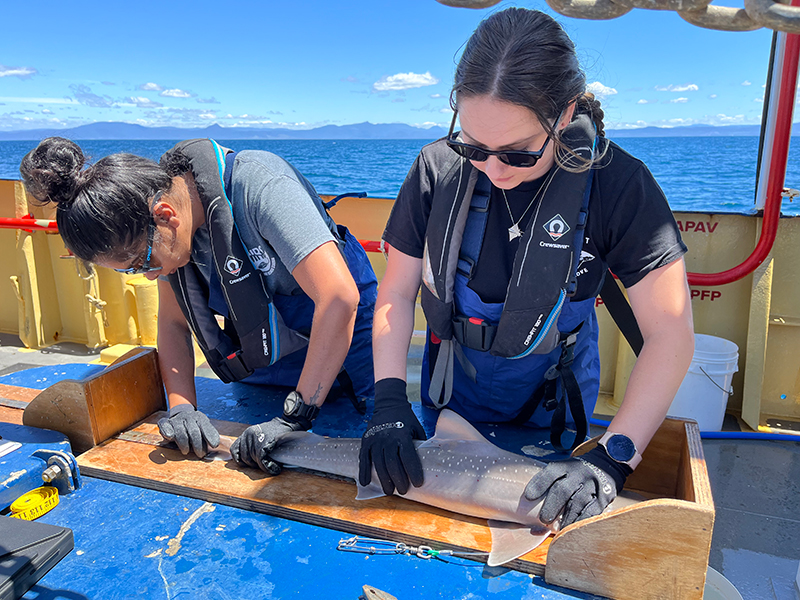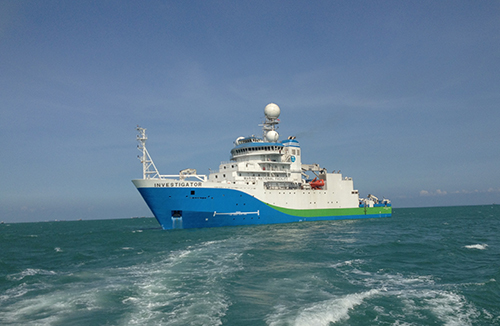An extensive review of the biological inputs into fish stock models has set the groundwork for further research to update essential species-specific information, including how they are responding to climate change.
Fisheries managers need the best possible information when making fisheries management decisions on fish stocks, so CSIRO fisheries scientist Dr Karen Evans has led a major review into the biological parameters used in stock assessments as part of FRDC-funded research.
The review itself was commissioned to address concerns raised by the Australian Fisheries Management Authority’s Commonwealth Research Advisory Committee about whether stock assessments were factoring in the way changes in ocean ecosystems were impacting the growth, fecundity and natural mortality of fish stocks.
“Australian waters are changing, and in some areas changing faster than the global average,” explains Karen. She says that changes in the environment can impact the dynamics of fish populations and predator-prey relationships. This then affects the level of fishing that different stocks can support.
The findings of her three-year project (2019-010) have resulted in a suite of further research that aims to fill some of the information gaps identified, including the analyses of new samples being gathered by CSIRO’s flagship vessel, the RV Investigator.

The Marine National Facility's new research vessel. Photo credit: CSIRO
This voyage, and another planned for 2024, will also help to build the skills and experience of the next generation of stock assessment scientists.
The origin of parameters
This new research is underpinned by the recently completed review of biological parameters and information used in Commonwealth stock assessments.
CSIRO undertook the review focusing on 40 stock assessments across nine Commonwealth fisheries and tracking many of these parameters back to their origin and first use, in stock assessment models. It is the first review of these parameters in 20 years.

Karen says more than half of stocks had reasonably up-to-date information across most of the parameters used. She highlights Patagonian Toothfish and some shark species as among the most current.
For other species, however, the information for some parameters was more than 20 years old. In some instances, it had been borrowed from other similar species in neighbouring countries, for example, data for Indian Ocean tuna species had been drawn from similar species in the Pacific Ocean.
Across all of the fisheries and stock assessments reviewed, the origin of 22 per cent of parameters could not be identified. “In some fisheries we actually couldn't determine the provenance of up to half the parameters used – we didn't know where they originated from, how old they were, how they were calculated, and what data was used to calculate them,” she says.
Climate impacts on the south-eastern fisheries
In a second part of the project researchers used CSIRO ecosystem models Ecopath with Ecosim (EwE) and Atlantis to simulate “reasonable changes” in the environment and assess how that might affect the assessed abundance of particular species. Do even small changes in the parameters result in a significant over or under-estimation of fish populations?
This modelling focused on the Southern and Eastern Scalefish and Shark Fishery (SESSF) in south-eastern Australia, a region identified as a global warming ‘hot spot’.
It found that small changes in key parameters produced similar results at an “all of ecosystem” total biomass level. However, there were significant differences for specific fish stocks, with much lower catches projected compared to stock assessments using parameters based on data from the 1990s.
These included a 75% decrease in the productivity of Redfish (Centroberyx affinis), close to 50% in Tiger Flathead (Neoplatycephalus richardsoni), 30% in Jackass Morwong (Nemadactylus macropterus) and the School Whiting group (Sillago spp.) and 20% in Blue Grenadier (Macruronus novaezelandiae).
These findings have helped to identify priorities for further work, leading FRDC to become a co-funder of a series of voyages of the RV Investigator, which will resample a series of sites last sampled 25 years ago in the south-eastern Australian ecosystem as part of CSIRO’s broader South East Australia Marine Ecosystem Study.
Fisheries scientists, managers and the commercial fishing sector will all be involved in discussions to identify the projects that postgraduate students will carry out in the next four years. Many of these projects will incorporate samples collected by the RV Investigator voyages and help fill information gaps identified by the review.

Investigator: a new era in marine and atmospheric research. Photo credit: CSIRO
FRDC’s Project Manager Dr Toby Piddocke says it is important that the parameters used in assessing stocks reflect ecosystem changes, which have been significant over the past 30 years. Climate change is part of the story, but historical fishing pressure on particular stocks may also have contributed to fundamental ecosystem changes.
“Even where fishing mortality has been reduced some stocks simply aren’t bouncing back,” says Toby.
“Industry has worked very closely with fisheries scientists and managers on stewardship of their fisheries. But for some fish stocks, these reductions in fishing mortality haven’t led to substantial stock rebuilding. We need to know more about what is happening in the ecosystem, and whether there have been some fundamental shifts.”
He says the review of parameters was important to increase the confidence in the outcomes of stock assessments, so that fishers can be confident that fisheries management is informed by the best possible scientific evidence.
“We’re also investing in a project with Dr John Morrongiello at the University of Melbourne looking at novel methods for estimating size and age at maturity, which are key parameters in stock assessments,” notes Toby.
“Overall, FRDC is investing significantly to improve knowledge of the biological parameters and ecological drivers underpinning fish-stock productivity.
Ship at sea
“Additionally, this work provides important opportunities for the next generation of scientists to learn alongside experts in these highly technical fields. These investments will help to ensure that fisheries managers and industry have a high-quality scientific evidence base from which to make future management decisions about these stocks and fisheries,” says Toby.
You can step aboard CSIRO’s state of the art research vessel the RV Investigator with this virtual tour.
This relates to R&D Plan Outcomes 2 and 3 and Enabling Strategy 2





